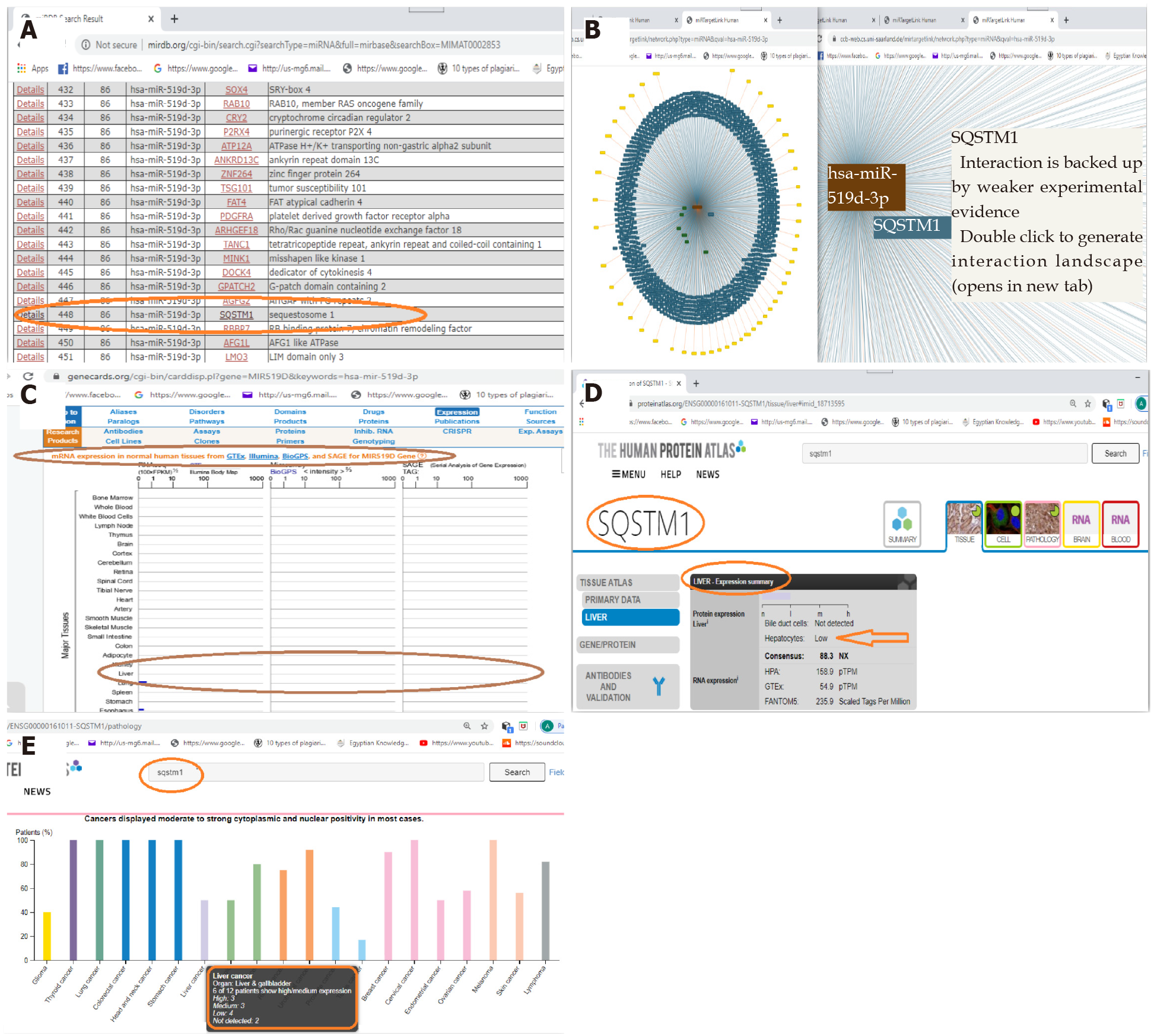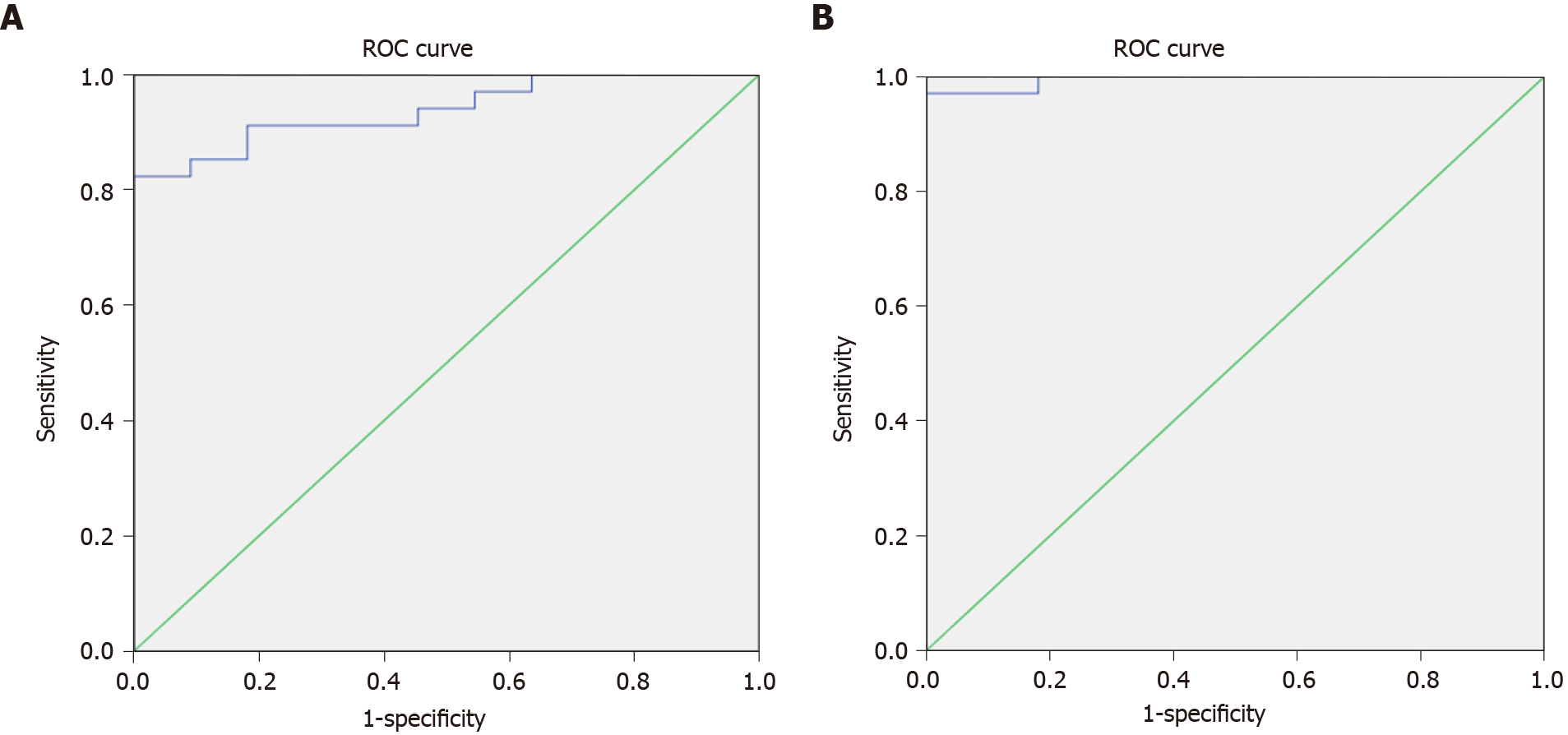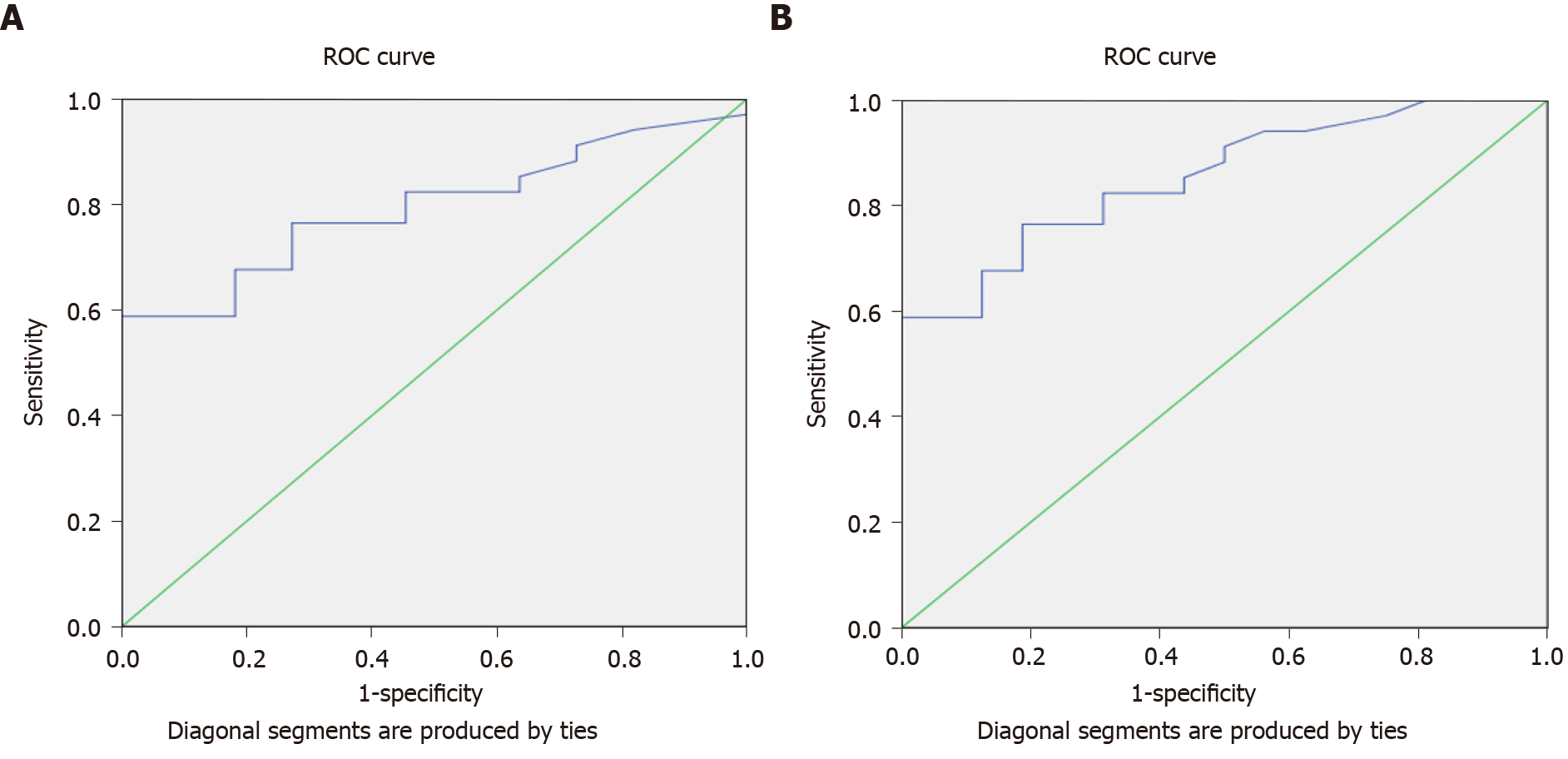Copyright
©The Author(s) 2021.
World J Hepatol. Dec 27, 2021; 13(12): 2137-2149
Published online Dec 27, 2021. doi: 10.4254/wjh.v13.i12.2137
Published online Dec 27, 2021. doi: 10.4254/wjh.v13.i12.2137
Figure 1 Bioinformatic search and validation of the newly diagnostic biomarkers.
A: miR-519d-3p and SQSTM1 as a targeted mRNA according to miRDB (http://mirdb.org/cgi-bin/search.cgi?searchType=miRNA&full=mirbase&searchBox=MIMAT0002853); B: A network of 923 genes targeted by hsa-miR-519d-3p, along with focusing on SQSTM1 in the network (miRTargetLink Human) (https://ccb-web.cs.uni-saarland.de/mirtargetlink/network.php?type=miRNA&qval=hsa-miR-519d-3p); C: The expression of miR-519d in liver tissue and other tissues (https://www.genecards.org/); D: The tissue expression of SQSTM1 is low in hepatocytes of healthy liver tissue (www.proteinatlas.org); E: The expression of SQSTM1 in cancers and liver cancer specifically (www.proteinatlas.org).
Figure 2 Box-plot figures showing the mean delta–delta threshold cycle in the new diagnostic biomarkers in different groups.
A: Illustration of the mean delta–delta threshold cycle (DDCT) of the quantitative real-time polymerase chain reaction (qRT-PCR) results for hsa-miR-519d in the serum of the hepatocellular carcinoma (HCC), chronic liver infection, and control groups using error bars: ± 1 [mean ± standard deviation (SD)]; B: Illustration of the mean DDCT of the qRT-PCR results for mRNA of SQSTM1 in the serum of the HCC, chronic liver infection, and control groups using error bars: ± 1 (mean ± SD). DDCT: Delta–delta threshold cycle; HCC: Hepatocellular carcinoma.
Figure 3 Receiver operating characteristic curves of the new diagnostic biomarkers studied to differentiate between hepatocellular carcinoma and chronic liver infection groups.
A: Receiver operating characteristic (ROC) curve for assessing the validity of the RQ results of quantitative real-time polymerase chain reaction (qRT-PCR) for hsa-miR-519d in the serum to differentiate the hepatocellular carcinoma and chronic liver infection groups; B: ROC curve assessing the validity of the RQ results of qRT-PCR for mRNA of SQSTM1 in the serum between hepatocellular carcinoma and chronic liver infection groups. ROC: Receiver operating characteristic.
Figure 4 Receiver operating characteristic curves of the new diagnostic biomarkers studied to differentiate between the malignant and non-malignant groups.
A: Receiver operating characteristic (ROC) curve assessing the validity of the RQ results of quantitative real-time polymerase chain reaction (qRT-PCR) for hsa-miR-519d in the serum among the malignant and non-malignant groups; B: ROC curve assessing the validity of the RQ results of qRT-PCR for mRNA of SQSTM1 in the serum among the malignant and non-malignant groups. ROC: Receiver operating characteristic.
Figure 5 Receiver operating characteristic curves of the alpha-fetoprotein studied to differentiate between the hepatocellular carcinoma and chronic liver disease groups/malignant and non-malignant groups.
A: Receiver operating characteristic (ROC) curve to assess the validity of alpha-fetoprotein (AFP) for the differentiation between the hepatocellular carcinoma and chronic liver disease groups; B: ROC curve assessing the validity of AFP for differentiating between the malignant and non-malignant groups. ROC: Receiver operating characteristic.
- Citation: Yosef T, Ibrahim WA, Matboli M, Swilam AA, El-Nakeep S. New stem cell autophagy surrogate diagnostic biomarkers in early-stage hepatocellular carcinoma in Egypt: A pilot study . World J Hepatol 2021; 13(12): 2137-2149
- URL: https://www.wjgnet.com/1948-5182/full/v13/i12/2137.htm
- DOI: https://dx.doi.org/10.4254/wjh.v13.i12.2137













